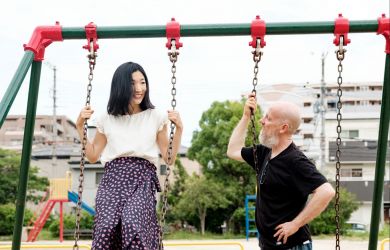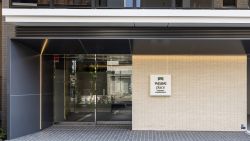
March 5, 2014
The Half-Life of Anti-Nuclear Protest
As public outcry subsides, voices both for and against nuclear energy rises
By Metropolis
Originally published on metropolis.co.jp on March 2014

March 11 will mark three years since the earthquake and tsunami that devastated the northeast coast of Japan and caused the second largest nuclear incident in history. No matter how many times the statistics of human loss are repeated, the impact of those numbers still remains: 19,000 people left dead or missing from the earthquake and tsunami and over 300,000 displaced from the 12-mile evacuation zone surrounding the Fukushima Daiichi nuclear power plant. Of those displaced, 140,000 still haven’t received satisfactory compensation, many are forced to live in temporary settlements or shared quarters and 1,600 have since died from issues related to displacement. Evacuees from Chernobyl saw their life expectancy drop from 65 to 58 years—not because of radiation but due to issues such as depression, alcoholism and suicide—and the immense stress of forced location is having the same effects on those ripped from their homes in Fukushima.
National polls taken since show that the majority of Japanese people oppose the use of nuclear power, and in the summer of 2012 tens of thousands of people (some estimates as high as 200,000) took to the sweltering streets of Tokyo in vociferous protests against the restart of two reactors. In 2014, however, the issue no longer seems to be the political third rail it once was. Prime Minister Shinzo Abe has stated the importance of nuclear power in his plans for Japan’s economy yet continues to enjoy a high popularity rating. And in the recent Tokyo gubernatorial election, voters named welfare and the economy as more important issues than nuclear power, eventually choosing pro-nuclear candidate Yoichi Masuzoe over nuclear opponents Kenji Utsinomiya and Morihiro Hosakawa as their governor.
In the area surrounding the Fukushima Daiichi plant it will be decades before crops can be grown safely again, but in comparison with the thirty-year half-life of the cesium that contaminates the land, the half-life of Japan’s anti-nuclear protest seems relatively short. Visitors to the capital, long since reverted to its neon-drenched default after the setsuden (energy conservation) measures immediately following the triple-catastrophe, could even be forgiven for thinking that power is no longer a concern. The only visible consequence of the disaster seems to be a few missing light bulbs on each train carriage, the dying flicker of a series of short-lived energy saving campaigns.
281_anti nuke


Though life may have gone back to normal in Tokyo, a series of reminders of the disaster have made sporadic appearances throughout the city in the form of artistic protest stickers. The most prevalent depicts a girl wearing a raincoat with the words “I hate rain” split by a nuclear symbol, while others label Prime Minister Shinzo Abe and TEPCO as liars, often portraying the latter’s logo as gun barrels or an atomic bomb.
The man responsible works under the moniker 281_Antinuke. He first started in November 2011 because he felt the issue of nuclear power was fading from the public conscience and wanted to somehow remind everyone that “3/11 is not over.” The Japanese government—previously notorious for its system of amakudari, wherein bureaucrats condoned and promoted industries they were supposed to be regulating in return for lucrative jobs upon retirement—continues to assert that nuclear power is the only way to revive the economy, but 281 hopes his work will provide a catalyst for people to question that narrative. “Even just once. I don’t want people to give up on finding an alternative,” he says.

Though championed as a Japanese Banksy by international media, there’s also been significant resistance to his activities from nationalistic Japanese groups and at one point he received death threats that frightened him into temporarily shutting down his social media accounts. More accustomed to the attention, he now brushes off these early incidents as “lightweight trolling” and admits, “At that time I wasn’t used to it and it took me by surprise.” Since then he’s kept his real identity a closely-guarded secret and only appears in photographs with his hood up and features concealed behind a face mask, vaguely resembling the hazmat-suited TEPCO employees currently engaged in the Fukushima clean-up. Not even his family, who live near Fukushima, know of his alternate persona.
Right now, 281 confesses that he’s “obviously failing” in his goal to keep the issue alive, and he’s currently searching for legal ways to get his work seen by more people. But for anybody who wishes to resist the government’s nuclear energy policies his advice was clear: “It’s important to debate this issue with many people, and more than anything, I think it’s vital we don’t forget. Of course we should all try to save energy, but also when you go to the supermarket and choose what kind of vegetables and meat to buy, which producers to buy it from, those kinds of things are also outward signs of your intentions and can mobilize society.”
The power of demonstrations is also something he has faith in, having attended them in Tokyo countless times.
Metropolis has five 281_anti nuke stickers for our readers. E-mail giveaways@metropolis.co.jp with your name and mailing address to win.






